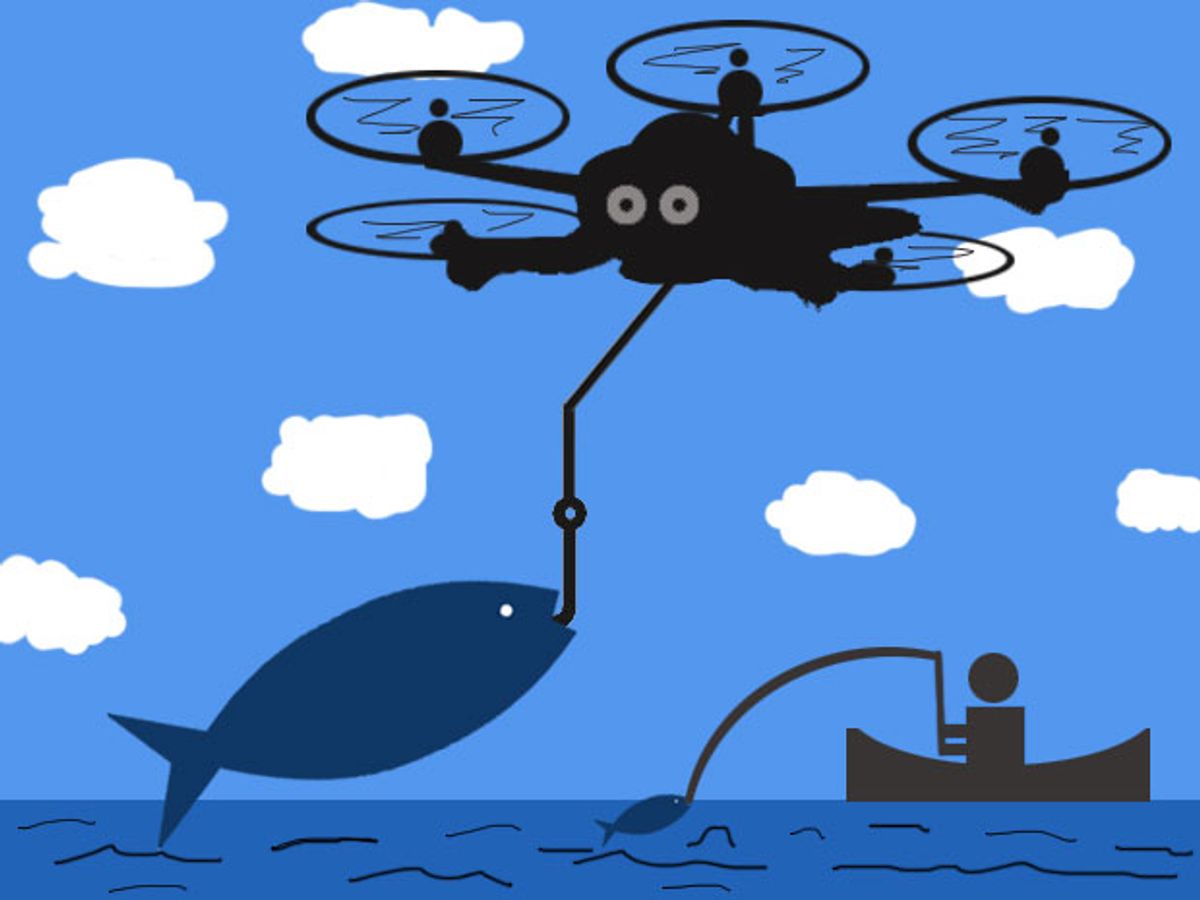Restrictions on small drones, model aircraft, sUAS (small unmanned aircraft systems), or whatever you want to call them are being promulgated almost too quickly to chart these days. Late last month the U.S. Federal Aviation Administration forbade modelers from engaging in first-person view piloting, and the National Park Service announced its intention of banning essentially all model aircraft from its 84 million acres—to name just a couple of prominent federal clamp-downs. In addition, 36 states have been busy formulating their own drone regulations this year, four of which have recently enacted laws, mostly focused on protecting people’s privacy. But get ready for a novel variation on this theme working its way through the North Carolina State Assembly.
North Carolina House Bill 1099, which passed unanimously on June 25th and is soon to be taken up by the state Senate, includes a variety of restrictions on how drones can be used within the state. Some of the rules, meant to address privacy issues that arise when drones are outfitted with cameras, are almost predictable, given the kinds of laws already on the books in some other states. But the North Carolina bill contains some curious aspects that I’ve not run across before, the most surprising of which is a prohibition on the use of drones for hunting and fishing.
Of course, no government official in his or her right mind would want to allow people to attach guns to drones. But making it a “misdemeanor for any person to fish or hunt using an unmanned aircraft system” is a much broader prohibition. It bars, say, using images from a small drone to help determine where to hunt or fish, an activity that some companies and individuals are already pursuing.
Using drones to spot wildlife is a contentious subject with recreational hunters, who in some cases use drones to spot prey. It’s unclear to me how common (or useful) drones could be for recreational fishing, but to be sure, it’s been done.
Whether the North Carolina bill prohibits using drones to hunt or fish for recreation only is unclear. People who did this could argue that the drone is being "flown solely for hobby or recreational purposes," in which case it would qualify under the proposed law as a model aircraft and not an unmanned aircraft system, exempting it from these restrictions. Then again, state prosecutors and courts may well interpret the law to mean that the hobby exception applies only to the hobby of flying model aircraft, not to the hobby of hunting or fishing.
Another section of the bill requires a license to operate a drone for commercial purposes and prohibits such operation until the FAA has authorized it. On the surface, this sounds pretty sensible. But consider this: The legal status of the FAA’s current prohibition on flying model aircraft for compensation is, pardon the pun, still up in the air. According to the administrative law judge who ruled in the Pirker case, the FAA prohibition on commercial use of model aircraft, made in 2007, is not legally valid.
The FAA has appealed that decision and final say on the matter isn't yet in. But what happens if the original decision is upheld? I expect that if the FAA has no valid rule against the commercial use of model aircraft, lots of people will be emboldened to fly such models for hire—for crop monitoring, film-production work, whatever—except perhaps in North Carolina, where state law could still outlaw such activity, given that the FAA has not expressly authorized it.
These goings-on in North Carolina should remind drone/model-aircraft/sUAS enthusiasts that they need to keep abreast, not just of federal laws in this swiftly moving area, but state laws as well. While that complicates their lives, localization of drone regulation is a good thing in my view, especially if final say of what is or isn’t allowed in the air at low altitudes ultimately goes to the landowners whose property is being overflown.
David Schneider is a senior editor at IEEE Spectrum. His beat focuses on computing, and he contributes frequently to Spectrum's Hands On column. He holds a bachelor's degree in geology from Yale, a master's in engineering from UC Berkeley, and a doctorate in geology from Columbia.




